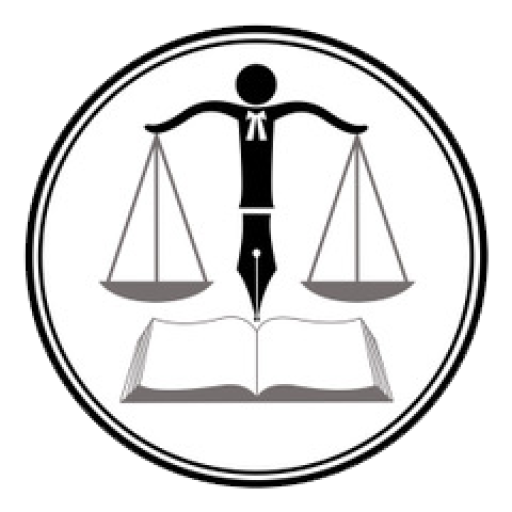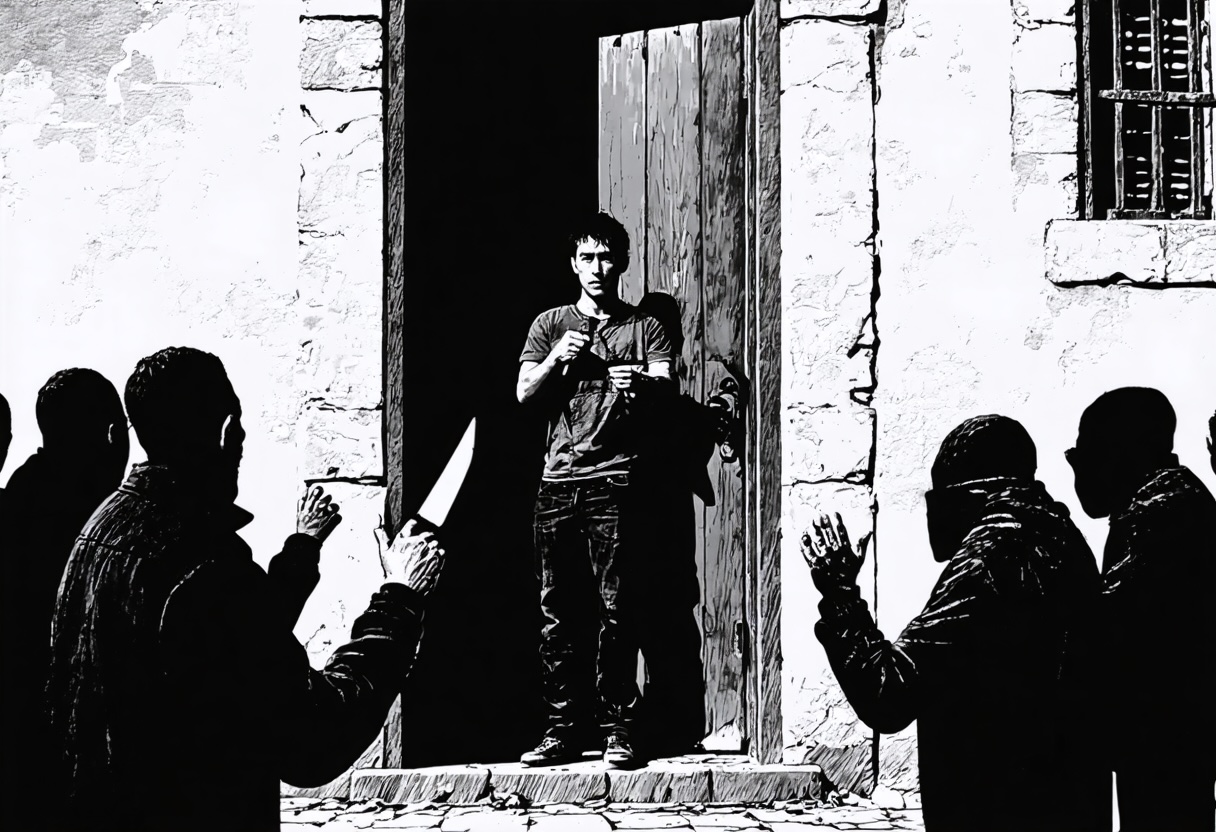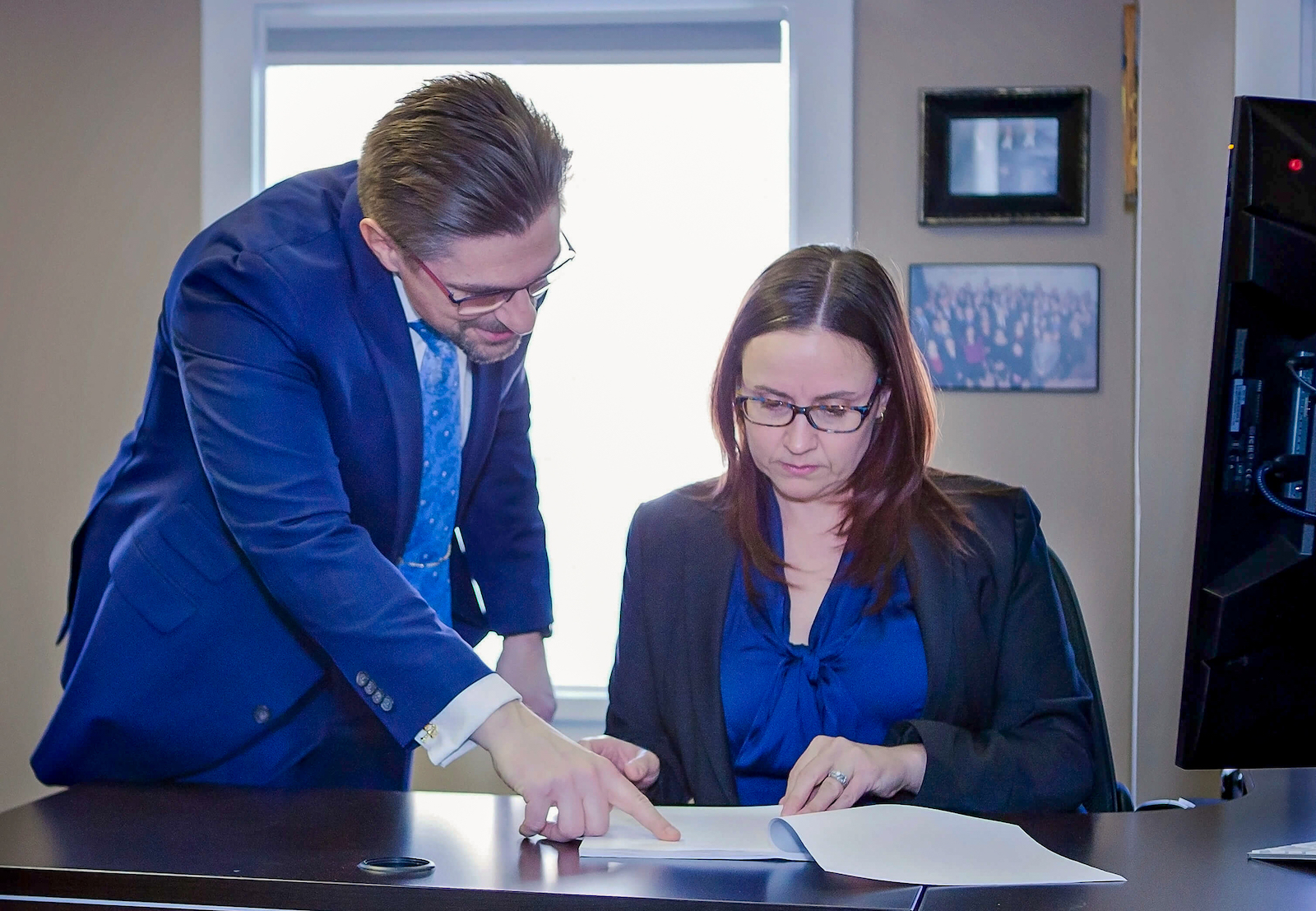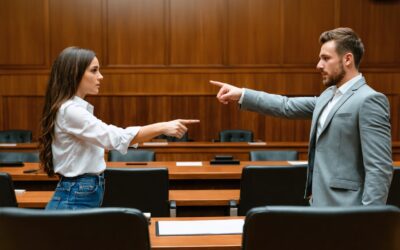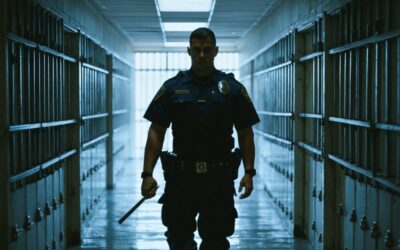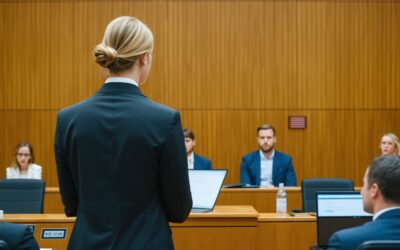OVERVIEW
[1] John Pierre and Lesley Watterworth had been in a tumultuous relationship, fueled by substance abuse. It is not disputed that on November 1, 2016, Mr. Pierre stabbed Ms. Watterworth 69 times in a frenzied attack that caused her death. Mr. Pierre was charged with second-degree murder. The only live issue by the end of his trial was whether he had intentionally caused Ms. Watterworth’s death, thereby committing second-degree murder, or had unintentionally but unlawfully caused her death, thereby committing the offence of manslaughter.
[2] Although the horrific nature of the sustained attack strongly supports an inference that Mr. Pierre must have intended to kill Ms. Watterworth or to cause her bodily harm that he knew was likely to cause her death, he sought to raise a reasonable doubt about his intention by claiming that his mind was disordered at the time of the attack, and that he was not thinking. To support this claim, he relied on evidence about his mental health challenges, his intoxication, and a provocative comment he attributed to Ms. Watterworth immediately before he attacked her. To be clear, Mr. Pierre did not raise the discrete defences of intoxication, provocation, or mental disorder, as there was no air of reality for any of them….
[3] In support of its case, the Crown presented extensive after-the-fact conduct evidence from events that occurred both immediately after the attack and during the following eight to ten hours, culminating in Mr. Pierre’s arrest. Both parties relied heavily on this evidence in advancing their respective positions.
[4] Mr. Pierre now appeals his conviction, claiming that the trial judge’s jury charge relating to after-the-fact conduct evidence failed to properly equip the jury to decide the case according to law and the evidence. He argues that although the trial judge provided extensive assistance on the permissible use that could be made of the after-the-fact conduct evidence on the issue of Mr. Pierre’s intoxication, she incorrectly invited jurors to consider this evidence in evaluating Mr. Pierre’s mental state generally; erred in failing to provide the jury with a limiting instruction relating to the Crown’s concealment submissions; and erred by inviting jurors to conclude Mr. Pierre’s conduct after the killing was consistent with a “callous disregard” for the fact that he had just killed someone….
[5] For reasons that follow, I would allow the appeal. I am persuaded that the trial judge made each of these errors.
[8] Mr. Pierre testified that he and Ms. Watterworth had been partying for three days prior to their fatal altercation, including by using crystal meth, crack, and alcohol. He said they had not slept during this period. He testified that after their drugs ran out on the morning of November 1, 2022, Ms. Watterworth acquired additional crack cocaine which they consumed, after which he continued drinking.
[9] Later that day, approaching 3:00 p.m., the two began arguing. Mr. Pierre said that as the argument escalated, he accused Ms. Watterworth of cheating with her former boyfriend. He claimed that she responded sarcastically, saying that “it wouldn’t have happened if you wouldn’t have went to Brentwood”. He said that upon hearing this he “exploded” like a shaken pop can, his head just went somewhere, and that he took a knife off the stove and started stabbing her. He testified that he “wasn’t feeling anything at the time.” He said he blanked out for what seemed like seconds, and everything was red, like when you close your eyes and stare at the sun. He described urinating in his clothing and said his ears were ringing. He testified that he recalled having the knife and being on top of Ms. Watterworth and that she was not moving. He said that he loved Ms. Watterworth and did not mean to hurt her.
B. AFTER-THE-FACT CONDUCT EVIDENCE
[11] Apart from forensic evidence from the crime scene and pathology evidence, which I will describe below, the balance of the evidence called by the Crown related primarily to Mr. Pierre’s conduct following the killing. To be admissible, “after-the- fact conduct evidence” must, as a matter of logic and human experience, allow a trier-of-fact to draw inferences based on a person’s words or actions that are relevant to a material issue in the case: R. v. Calnen, 2019 SCC 6, [2019] 1 S.C.R. 301, at paras. 107, 111; R. v. McGregor, 2019 ONCA 307, 145 O.R. (3d) 641, at para. 102.
[12]….Put in simple terms, the after the-fact conduct evidence was admitted as proof that Mr. Pierre had a rational mindset at the time of the killing.
[13] This evidence can be broken down into five convenient categories: (1) evidence relating to exchanges with the neighbours; (2) evidence of Mr. Pierre’s departure without summoning help; (3) evidence of Mr. Pierre’s attempted hand washing and wearing a business suit over his overalls; (4) evidence of Mr. Pierre’s admissions about the killing; and (5) evidence of Mr. Pierre’s condition and conduct after he left the apartment.
(1) Evidence relating to exchanges with the neighbours
[14] By the time the neighbours had gathered in the backyard, the screaming had stopped. One of them, Paul Kelly, demanded from outside that Mr. Pierre bring Ms. Watterworth to the window to show that she was okay. Testimony was provided that when Mr. Pierre appeared at the window, he yelled various things in response, including “Happy Halloween”, which he kept repeating, “Do you want to smoke a joint?” and “Do you want a beer?”.
[15] Mr. Kelly testified that after the exchange through the window, he and the two downstairs neighbours went up the stairs to check on Ms. Watterworth’s wellbeing. He spoke to Mr. Pierre through the door. Mr. Pierre refused Mr. Kelly’s demand to bring Ms. Watterworth to the door, claiming that he and Ms. Watterworth were intoxicated from weed and alcohol. When Mr. Kelly threatened to call the police, Mr. Pierre told Mr. Kelly to go ahead, because the police were friends of his.
(2) Evidence of the departure of Mr. Pierre without summoning help
[16] None of the neighbours called the police despite Mr. Kelly’s threat to do so. It is not contested that Mr. Pierre left the apartment without summoning the police or seeking medical assistance for Ms. Watterworth.
(3) Evidence of Mr. Pierre’s attempted hand washing and wearing a business suit over his overalls
[17] Forensic evidence subsequently gathered from the apartment suggested that, before he left, Mr. Pierre may have attempted to wash his hands. However, his hands were soiled and still had traces of blood when he was arrested hours later. Evidence was also presented that he was wearing a business suit when he left the apartment. As I will describe below, when Mr. Pierre was arrested hours later, he was found to be wearing the business suit over the overalls he had been wearing at the time of the stabbing.
(4) Evidence of Mr. Pierre’s admissions about the killing
[18] After he left the apartment Mr. Pierre visited a friend, William Borders, between 3:30 p.m. and 4:00 p.m. While at Mr. Border’s house, he wrote a note on paper he had borrowed that, “I killed Windsor’s worst in 15 years.” He told Mr. Borders he had killed Ms. Watterworth but Mr. Borders did not believe him.
(5) Evidence of Mr. Pierre’s condition and conduct after he left the apartment
[19] According to Mr. Borders, after Mr. Pierre wrote his confession note, he put the note in his mouth, chewed it and put it in an ashtray. He then borrowed money from Mr. Borders and left, expressing his disbelief that Mr. Borders did not believe him. Mr. Borders testified that Mr. Pierre appeared to be “edgy” and “nervous” and “everything seemed odd”, including how Mr. Pierre spoke, but he said that Mr. Pierre appeared to be sober, and he denied giving Mr. Pierre drugs, as Mr. Pierre later claimed in his testimony.
[20] At 4:52 p.m., Mr. Pierre was captured by security video arriving at the Beer Store nearby, where he was known to be a regular. A Beer Store employee who knew Mr. Pierre as a customer said he was “more talkative”, “strange”, “extra friendly” and “weird” but did not appear to be impaired. This assessment was….
….However, security video footage shows that while in the Beer Store Mr. Pierre placed an empty beer can on the counter and replaced it with a full can which he then purchased. He can also be seen to stagger as he held onto the conveyor belt near the cash.
[21] Mr. Pierre’s movements that day were next witnessed at the Keg restaurant at approximately 6:15 p.m., where he was again captured by security video. A restaurant manager found Mr. Pierre to be shaky, nervous and on edge, as did the General Manager. Mr. Pierre tried to order two beers from the hostess stand before he sat down. When the restaurant manager took his order, he ordered beer, a glass of champagne, and food. The restaurant manager reported to the General Manager that Mr. Pierre was “shaking and sweating” and “not acting normal”, and his server said he appeared to be drunk and slurring. When he could not pay for the bill, Mr. Pierre left his health card, promising to pay the bill later. The General Manager said he was not in his “right state of mind”.
[22] Mr. Borders testified that at around 7:00 p.m., Mr. Pierre returned to his house with what appeared to be three beers. Mr. Borders testified that his demeanor was very different than it had been on his earlier visit, and he appeared as if he had been drinking. Mr. Pierre was not welcomed, but before he left, he gave Mr. Borders a baseball with the words written on it, “Johnny Pierre, 2016. Happy Halloween. Good wishes to that are my friends”.
[24] At 11:42 p.m., Mr. Pierre entered the Windsor casino and went to a restaurant inside. He ordered “the largest thing on the menu” and a beer. He was described as “quiet”, “uneasy”, “fidgety” and “sweating” and he was “staring off a lot”. He later told the manager that he could not pay the bill. The manager said he seemed “not present mentally”. An OPP officer stationed at the casino became involved and after discovering that Mr. Pierre had an outstanding warrant, he arrested him.
[25] At the time of his arrest, Mr. Pierre was wearing a business suit without a tie, dress-shoes, and mismatching socks. He also had a toque and sunglasses with him. When he was being searched at the holding cell, he said “Wait till you see the blood on my clothes. I’m covered in blood.” It was then that police discovered that he was wearing the business suit over the overalls he had been wearing at the time of the attack. The overalls were soaked in blood. He was described as “jittery” “distracted” and “hyperactive” in the cell and he proposed showing the police “where the body is.”
D. OTHER DEFENCE EVIDENCE
[27] In addition to testifying in his defence, Mr. Pierre called Dr. Fabian, a psychologist, who examined him after the killing. Dr. Fabian testified that Mr. Pierre had experienced traits of Post Traumatic Stress Disorder. He expressed the opinion that Mr. Pierre had other specified trauma and stress related disorder. Mr. Pierre also had low self-esteem, some degree of depression, a mild neurocognitive disorder attributable to numerous concussions, antisocial personality disorder, various substance abuse disorders and borderline intellectual functioning. The result was that he had problems with impulse control, purposeful action, problem-solving and aggression.
F. THE JURY CHARGE
[37] The trial judge did an admirable job in reviewing the general legal principles that apply in determining guilt and evaluating evidence. She did not, however, give the jury a general instruction relating to after-the-fact conduct, as is customarily done in a case where after-the-fact conduct evidence is presented.
[39] She also instructed the jury to consider evidence of the three factors: intoxication, the remark made by Ms. Watterworth, and “Mr. Pierre’s mental disturbances”, “and their combined effect in assessing whether the Crown has proved that Mr. Pierre had the required state of mind for murder at the time he killed Ms. Watterworth.”
[40] She then said that she was going to turn to the issue of intoxication. She reviewed the consumption evidence and recounted Mr. Pierre’s testimony about the event, including his testimony “about his actions after the killing.” She reminded the jury to “[d]ecide whether the Crown has proven beyond a reasonable doubt that he did have that state of mind”, and she continued:
You should take into account the evidence about his consumption of alcohol and drugs along with the rest of the evidence that sheds light on his state of mind at the time of the offence. Look at John Pierre’s words and conduct before, at the time of, and after the killing. All of these things and the circumstances in which they happen, including how much evidence, and evidence of how much alcohol and drugs John Pierre consumed and their effect on his state of mind, may shed light on whether he had the intent for murder.
[41] In addressing what I have described as category (1) evidence – evidence relating to the exchanges with the neighbours – she said:
Consider whether what he did and said is consistent with a rational and conscious awareness. Was he making sense trying to keep people from discovering the crime? Or was he saying things that were odd and out of context, suggestive of something other than a rational mind?
[42] She then said, “Consider what Mr. Pierre did in the aftermath of the killing”, listed some of the after-the-fact conduct evidence, and continued:
Consider what, if anything, these actions tell you about his intention at the time of the kill. Are these actions the product of a callous disregard for the fact that he had just killed someone, or are these actions the product of what he called a state of shock? Were his actions those of someone who had carried out his intentions and was now moving on to other things, or were his actions those of someone whose consciousness was impaired?
[43] She continued generally with specific reference to the category (3) evidence:
Consider to what extent his actions are reflective of intentional and reflective thought. Mr. Pierre took the time to cover his bloody overalls with a business suit. You may find that if he had the presence of mind to do this, he was perhaps not too intoxicated to form the intention for murder. Or alternatively, you might find that a sober person seeking to evade detection would be more likely to have taken off the bloody overalls before putting on the suit and leaving the residence.
[45] She then addressed what I have described as the category (5) evidence – evidence of his condition and his conduct during his various visits – providing useful guidance on using this evid ence to assess Mr. Pierre’s sobriety at the time of the killing and cautioning jurors that “his level of sobriety hours after killing may be of limited value in determining his level of sobriety at the time of the killing.”
[46] When the trial judge summarized the submissions of defence counsel she said, in relevant part:
[Trial counsel] argued before you that Mr. Pierre’s testimony … about the events on that day are corroborated in important respects by … the testimony of many of the prosecution witnesses who spoke about Mr. Pierre’s behaviours, and actions, and utterances which illustrated the psychological conditions and intoxication that affected his state of mind. [Trial counsel] urged you to give careful and serious consideration to all of that evidence, and to decide that the true verdict in this case is one of manslaughter.
THE GENERAL LEGAL PRINCIPLES
[50] ….This appeal concerns the reasoning rules that apply to after-the fact conduct evidence. Those rules, which are most readily seen in jury trials in the form of required or suggested jury directions, originated to address unique reasoning risks that after-the-fact conduct evidence can give rise to: Calnen, at para. 116; R. v. Ethier, 2023 ONCA 600, 30 C.C.C. (3d) 121, at para. 57.
[51] Specifically, as circumstantial evidence, after-the-fact conduct evidence is often capable of supporting inferences not only about the material issue for which it has been received but for other purposes. Judicial experience has shown that some of the inferences that it may provoke are illogical or unfair, and that after-the-fact conduct evidence can be prone to receiving more weight than it warrants, in part because much of it discloses discreditable conduct by the accused. It can cause jurors to “jump to questionable conclusions” without the assistance of shared judicial experience: Calnen, at para. 116. Unless educated about the relevant risks, jurors are not apt to identify them and may engage in unfair reasoning. The law has therefore developed both “warnings” (cautionary instructions alerting jurors to reasoning dangers), and “limiting instructions” (directions to jurors to limit the use to which they put the evidence by telling them that “they must not consider the evidence for one or several purposes”): R. v. White, 2011 SCC 13, [2011] 1 S.C.R. 433 (“White (2011)”), at para. 34….
[52] However, there are no bright-line rules relating to what a jury charge must include where after-the-fact conduct evidence is admitted. It is not the case that special warnings are required relating to all after-the-fact conduct evidence: R. v. Cornelius, 2011 ONCA 551, 283 O.A.C. 66, at para. 19, citing White (2011), at paras. 105-107. Nor are limiting instructions required in every case. The requirements of the charge are based on the circumstance of the case, in light of the nature of the after-the-fact evidence and the trial as a whole, including the issues it presents, the entirety of the evidence, the relevance of the after-the-fact conduct evidence, and the submissions that have been made: Ethier, at para. 62; Calnen, at para. 118.
ANALYSIS
A. THE LIMITED USE INSTRUCTION
[55] In Calnen, at para. 113, Martin J., who in her dissenting judgment stated for the court the general legal principles that apply to the use of after-the-fact conduct, said:
Evidence is to be used only for the particular purpose for which it was admitted. When evidence is admissible for one purpose, but not for another, the finder of fact, whether judge or jury, needs to be mindful of and respectful of its permissible and impermissible uses. In such cases, a specific instruction to a jury that certain evidence has a limited use or is of no probative value on a particular issue is required.
See also, White (2011), at para. 39.
[56] As Watt J.A. explained in McGregor, at para. 106, “Instructions limiting the use of evidence by the trial judge typically include three elements: (i) identification of the evidence to which the instruction applies; (ii) an instruction on the permitted use of the evidence, and (iii) an instruction on the prohibited use of the evidence” (emphasis in original).
[57]….As I have explained that evidence was admitted solely for the purpose of demonstrating that Mr. Pierre had a rational mindset at the time of 2025 ONCA 589 (CanLII) the killing, despite his substance abuse and his mental challenges. Mr. Pierre argues that there is a risk that the jury would reason more broadly and unfairly by using Mr. Pierre’s after-the-fact conduct to infer that he had not only a rational mindset at the time, but that he intended to kill Ms. Watterworth….
….He submits, in substance, that “[t]he jury should have been instructed that [the after-the-fact conduct] evidence was only relevant to [whether he had a rational mindset at the time of the killing] and could not otherwise assist them in distinguishing between manslaughter and murder.”
[60] I cannot agree that the charge properly equipped jurors to understand that the after-the-fact conduct evidence was to be used solely in examining Mr. Pierre’s capacity for rational thought at the time of the killing notwithstanding his use of intoxicating substances and his mental state, and not more broadly as evidence of actual intention to kill. Standing alone, the paths to reasoning modeled by the trial judge in her charge, understood in the context of the trial as a whole, did do a commendable job in directing the kind of reasoning that jurors should undertake. However, any chance that this would prevent jurors from misusing the after-the fact conduct evidence to resolve the mens rea issue generally, disappeared when the trial judge effectively directed them that they could and should use such evidence to determine whether Mr. Pierre had the mens rea for the offence of murder. In my view, she did so by telling jurors explicitly that they should “[l]ook at John Pierre’s words and conduct before, at the time of, and after the killing. All these things and the circumstances in which they happen … may shed light on whether he had the intent for murder” (see para. 40 above) (emphasis added). This occurred after she, on several occasions, had already used the phrase “state of mind” as a place holder for the mens rea for murder (see paras. 38, 39 and 40 above), and had given the jury a general instruction, without limitation, to “determine John Pierre’s state of mind” by considering all of the evidence including ‘his words and conduct before, at the time of, and after the unlawful act that killed Lesly Watterworth” (see para. 38 above) (emphasis added). In my view, notwithstanding the contextual features the Crown relies upon, there is a real risk that jurors probably understood from the jury charge, taken as a whole, that they could rely on the after-the-fact conduct evidence in determining mens rea generally. [Emphasis by PJM]
[61] A charge to this effect was wrong. The sole relevance the after-the-fact conduct evidence had, and the sole purpose for which it was admitted, was to challenge Mr. Pierre’s claims that his consumption of intoxicating substances and his mental challenges undermined his ability for rational thought. But the mens rea issue was larger than that. It raised the broader question of whether, against the backdrop of Mr. Pierre’s consumption of intoxicating substances and his mental challenges, there was a reasonable doubt about whether Mr. Pierre may have lost control suddenly and acted in an unthinking fashion before his passions had time to cool immediately after Ms. Watterworth’s provocative comment. The after-the fact conduct evidence was not admitted for this broader purpose, nor would it have the logical capacity to inform anything other than the base question of whether Mr. Pierre had a rational mindset at the time of the killing. By directing jurors to consider this evidence in determining Mr. Pierre’s state of mind and whether he had the intent for murder, without limiting the inferences available, the trial judge did not simply fail to give a limited use direction. In my view, although I doubt that she intended to do so, she effectively misdirected jurors on the use they could make of this evidence.
[62] This case is therefore much like Ethier, where the accused was charged with murder, but may have committed only manslaughter, and the after-the-fact conduct evidence was admitted solely on the issue of intoxication. The trial judge in Ethier was found to have erred in those circumstances by failing to give a limiting instruction and by effectively inviting the jury to consider after-the-fact conduct evidence in resolving the broader issue of whether the appellant in that case had the mens rea for murder: Ethier, at paras. 71, 73. The charge provided in that case bore material similarities to the charge at issue here: Ethier, at paras. 65-66, 68 (see also R. v. Robinson, 2017 ONCA 645, 352 C.C.C. (3d) 503, at paras. 65-67). I am persuaded that the trial judge made the same error here.
[67] I would therefore reject the Crown submission and would find that the trial judge erred.
B. THE CONSCIOUSNESS OF GUILT INSTRUCTION
[68] The Crown relied heavily on several acts by Mr. Pierre that it described as acts of concealment and flight, including: (1) his apparent attempts at washing his hands; (2) concealing his bloody overalls by putting a suit over them; (3) his act of leaving the apartment “in a hurry” before the police could arrive; and (4) his failure to call the police or an ambulance (see paras. 31-32 above). The Crown persistently described these events as acts of concealment by Mr. Pierre, in which he was trying to distance himself from his criminal responsibility.
[70] I agree with Mr. Pierre that there is a realistic risk that jurors would have drawn an inference that he was acting as if conscious of his guilt, an inference that is susceptible to two long-recognized problems. First, this kind of inference is prone to be given undue weight because it is inherently prejudicial. As I will explain, where the risk of undue prejudice from evidence of consciousness of guilt arises it is usually addressed by a jury warning along with associated directions. The jury direction the trial judge gave in this case was less extensive than it arguably should have been, but I need not decide whether this alone constituted an error, because, in my view, the trial judge erred in failing to address the second long-recognized problem that an inference of consciousness of guilt can give rise to. As I will explain, this second problem can occur where there is a live issue in the case relating to the level of culpability of the accused. In such cases, if there is no issue as to the culpability of the accused, an inference that the accused acted as if they were conscious of their guilt has no probative value, and a trial judge will be obliged to give the jury a limiting instruction to avoid this inference. The trial judge did not do so and in my view erred.
[72] The first potential problem with after-the-fact conduct evidence showing consciousness of guilt – the prejudicial reasoning concern – arises because such evidence can raise a “substantial risk of jury error” by causing jurors to “jump too quickly … to an inference of guilt”, without considering all of the evidence: White, (2011), at para. 23. In describing this danger in R. v. Arcangioli, [1994] 1 S.C.R. 2025 ONCA 589 (CanLII) 129, at p. 143, Major. J., for the court, cited a passage from McCormick on Evidence, explaining that “the inference of consciousness of guilt of the particular crime is so uncertain and ambiguous and the evidence so prejudicial” that the evidence may not be used properly. He also referenced the decision in Gudmondson v. King, (1933), 60 C.C.C. 332, at pp. 332-33 (S.C.C.), where the court found error on the part of a judge in not warning the jury to be very cautious in a manslaughter case before drawing a consciousness of guilt inference from the failure of the accused to stop to give aid to the individuals who had been injured, since this evidence “was likely to create impressions which might preclude or gravely militate against a judicial examination by the jury of the grounds of defence”.
[73] To be clear, it will often be permissible for triers of fact to infer from an accused person’s after-the-fact conduct that they were acting as if conscious of their own criminal conduct, and to rely on this inference to support a finding of guilt: R. v. Peavoy (1997), 34 O.R. (3d) 620 (C.A.), at para. 26. However, given how inflammatory such evidence can be, judicial assistance may be required in a jury trial to reduce the risk of prejudicial reasoning. In most cases the risk that jurors will draw a direct inference of guilt from such evidence can be addressed by ensuring that jurors are aware of and consider alternative explanations for the allegedly evasive conduct, and by providing a warning to them to be cautious with such evidence, and to reserve final judgment about the meaning of the accused’s conduct until all the evidence has been considered: White (2011), at para. 24.
[74] Here, the trial judge outlined alternative explanations and she advised the jury to consider the after-the-fact conduct evidence alongside all of the other evidence, but she did not specifically caution them against the risk of giving undue weight to the consciousness of guilt inference, or advise them that such evidence has only an indirect bearing on guilt or otherwise warn them against using the after the-fact conduct evidence to draw a direct inference of guilt, as is sometimes required: Ethier, at para. 69; R. v. Lumberjack, 2017 SKCA 106, 357 C.C.C. (3d) 263, at para. 41.
[75] As indicated, the second problem in using evidence of concealment of responsibility evidence can arise if there is a live issue as to the level of guilt of the accused. In most such cases, an inference that the accused was conscious of their own guilt will not logically assist in identifying which of the possible offences the accused faces that they are conscious of having committed: R. v. Angelis, 2013 ONCA 70, 300 O.A.C. 367, at paras. 52-53. This will be so where, in the circumstances and context of the case, the acts of concealment or flight can be equally explained or are equally consistent with an attempt by the accused to evade responsibility for any one of the offences that may have been committed: 2025 ONCA 589 (CanLII) Calnen, at para. 124; Ethier, at para. 59….
[76] For example, in Arcangioli, the appellant admitted that he committed a common assault by punching the victim, but he denied that he committed an aggravated assault by stabbing the victim….
….To prove the appellant’s guilt, the Crown relied on his flight from a location where the victim had been stabbed as proof that he was conscious of his own guilt. The problem was that this evidence could not show whether the appellant fled because he was conscious of having committed a common assault by punching the victim, or because he was conscious of having committed an aggravated assault by stabbing the victim, the offence that he was charged with committing, as his flight was equally consistent with both possibilities. Since the appellant admitted his culpability for common assault, the evidence of his flight had no probative value and the trial judge erred by failing to tell this to jurors: Arcangioli, at paras. 44-45. Many cases have reaffirmed the need for a limiting instruction where the level of guilt of the accused is a live issue and the evidence is incapable of identifying the offence the accused committed: R. v. White, [1998] 2 S.C.R. 72, at para. 23; White (2011), at para. 37; Calnen, at para. 120; Angelis, at para. 53; Ethier, at para. 60; and Peavoy, at paras. 32, 33. The need for a limiting direction is particularly acute where the after-the-fact conduct is a dominant feature of the evidence or formed a significant part of the case: Robinson, at para. 63; Peavoy, at para. 35. Absent a limiting direction, there may be a real risk of jurors inferring that “the appellant was guilty, as the Crown alleged, because he acted as though he was guilty of something”: Ethier, at para. 75; R. v. Nagy, 2023 ONCA 184, 166 O.R. (3d) 545, at para. 26.
[77] In this case, there was a live issue as to Mr. Pierre’s level of guilt, whether it be of the charged offence of second-degree murder or the included offence of manslaughter. And the evidence of evasion through concealment and flight was equally consistent with him believing that he had committed either of the two offences. Moreover, Mr. Pierre did not deny that he was culpable in Ms. Watterworth’s death. He admitted killing her. Therefore, the evidence of evasion and flight offered no probative value in determining whether Mr. Pierre committed murder or manslaughter. Yet the trial judge did not provide a limiting instruction.[Emphasis by PJM]
[78] I am persuaded that there was a considerable risk that jurors would misuse the evidence of evasion and flight in both of the ways I have described. The Crown theory that the “evasion evidence” shows purposeful activity by Mr. Pierre, and therefore a rational mindset on his part, depended entirely on jurors accepting that he did these things for the purpose of concealing his guilt. If jurors took up the 2025 ONCA 589 (CanLII) invitation to draw this consciousness of guilt inference, it is highly probable that without a limiting instruction they would go on to reason that if Mr. Pierre was attempting to hide his guilt, he must be guilty….
[81]….the Crown did ask the jury to find that Mr. Pierre’s “actions and his inaction in the moments following Lesley’s death are consistent with the rational mindset and were carried out with the purpose of concealing a crime” (see para. 32 above) (emphasis added). Mindful that I should avoid parsing the words that have been used, this submission strikes me, and in my view would be apt to strike the jury, as a conjunctive request to use this evidence both to find that Mr. Pierre had a rational mindset and to infer that he knew he was guilty.
[85] As indicated, I need not go on and consider whether the trial judge failed to give an adequate warning to address the risk of prejudicial reasoning because it is unnecessary for me to do so, given my finding that the concealment evidence required a limiting instruction in this case.
C. THE CALLOUS DISREGARD INSTRUCTION
[86] The trial judge directed jurors relating to several of the acts Mr. Pierre engaged in in the aftermath of the killing, specifically, his acts of going into the living room to have a beer and smoke; going to the Beer store while bringing a beer; going to Mr. Border’s house and the Keg restaurant where he ordered food and drink, and then going to the Casino and eating a ribs dinner. The material passage, which I quote in para. 42 above, warrants reproduction here:
Consider what, if anything, these actions tell you about his intention at the time of the kill. Are these actions the product of a callous disregard for the fact that he had just killed someone, or are these actions the product of what he called a state of shock? Were his actions those of someone who had carried out his intentions and was now moving on to other things, or were his actions the product of what he called a state of shock?
[88] The law has stopped short of holding that after-the-fact conduct demeanour evidence can never serve as evidence of an individual’s state of mind. As Charron J. noted in White (2011), at para. 126, and as this case illustrates, there will be circumstances where it is the accused that is attempting to rely on after-the fact demeanour as evidence of innocence. Still, after-the-fact demeanour evidence is widely recognized to be an inherently dangerous form of proof because it assumes a “normal” range of reaction in dangerous situations, and that outward conduct will accurately reflect an individual’s state of mind or emotional reaction: R. v. Trotta, (2004), 191 O.A.C. 322 (Ont. C.A.), at paras. 40-41, rev’d on other grounds, 2007 SCC 49, 232 O.A.C 377; and see White (2011), at paras. 75-76. As Charron J. also noted in White (2011), at para. 107, depending on the specific context of the case, demeanour evidence may call for a special caution or be subject to an exclusion order, but it may not always be unavailable. In Trotta, at para. 41, Doherty J.A. held that for demeanour evidence to be used as proof of the state of mind of the accused “[t]he circumstances surrounding the proffered evidence must be such as to make the evidence sufficiently unambiguous and demonstrative of a relevant state of mind so as to overcome concerns that a trier of fact may too easily equate what is perceived to be an ‘unusual’ reaction with a guilty mind.” [Emphasis by PJM]
[89] In my view, evidence of callous after-the-fact behaviour by Mr. Pierre cannot make that grade. I can see no logical link that would rationally enable an inference of intent to kill to be drawn from the behaviour that was identified by the trial judge in the impugned passage. Moreover, even if callous disregard could serve logically as evidence of Mr. Pierre’s state of mind at the time of the killing, it would be as logically consistent with Mr. Pierre having been callous about committing culpable manslaughter as it is with him being uncaring about having committed a murder. Mr. Pierre’s “callous behaviour”, if that is what it was, could not properly be used in this case. I am confident that the trial judge did not intend to invite jurors to use displays of callous disregard by Mr. Pierre after the killing as evidence of his intention to kill but I agree with Mr. Pierre that there is a realistic prospect that jurors may interpret her charge as inviting them to do so.
[90] To be clear, I would not have come to this conclusion if the trial judge had instructed the jury in unambiguous terms that before accepting Mr. Pierre’s claim that his post-offence conduct was indicative of his irrational mindset that day, they should consider the alternative possibility that this conduct might simply be consistent with callous disregard for what he had done, which is what I suspect she was intending to communicate. Had that been the clear message, I would have accepted that jurors could be trusted to use a finding of callous disregard solely as a shield against the inference Mr. Pierre was seeking, and not as a sword to prove his guilt. But given its wording, the impugned passage in the charge can reasonably be taken as an invitation to use post-offence acts of callous disregard as affirmative evidence that Mr. Pierre was acting consistently with having committed a murder. This risk arises because the impugned passage begins with this language: “Consider what, if anything, these actions tell you about [Mr. Pierre’s] intention at the time of the killing”. It then goes on to offer as an option that these actions may be the product of callous disregard for the fact that he had just killed someone, and that they may be “the actions of someone who carried out his intentions and was now moving on to other things”. In my view, this passage raises the realistic risk I have identified. I see nothing in the balance of the charge that would steer jurors away from engaging in this impermissible reasoning.
[91] In my view, this part of the charge therefore constitutes a misdirection.
CONCLUSION
[93] I am persuaded that when the jury charge is viewed in its entirety and in the context of the trial, in all probability the jury was not accurately and sufficiently instructed and therefore it was left unequipped with an accurate understanding of the law and the evidence. This is most unfortunate, because save for the difficulties I have identified, the charge is otherwise a model of clarity, concision, and accuracy. In my view, there is no alternative but to allow the appeal, set aside the conviction, and order a retrial and I would do so.
